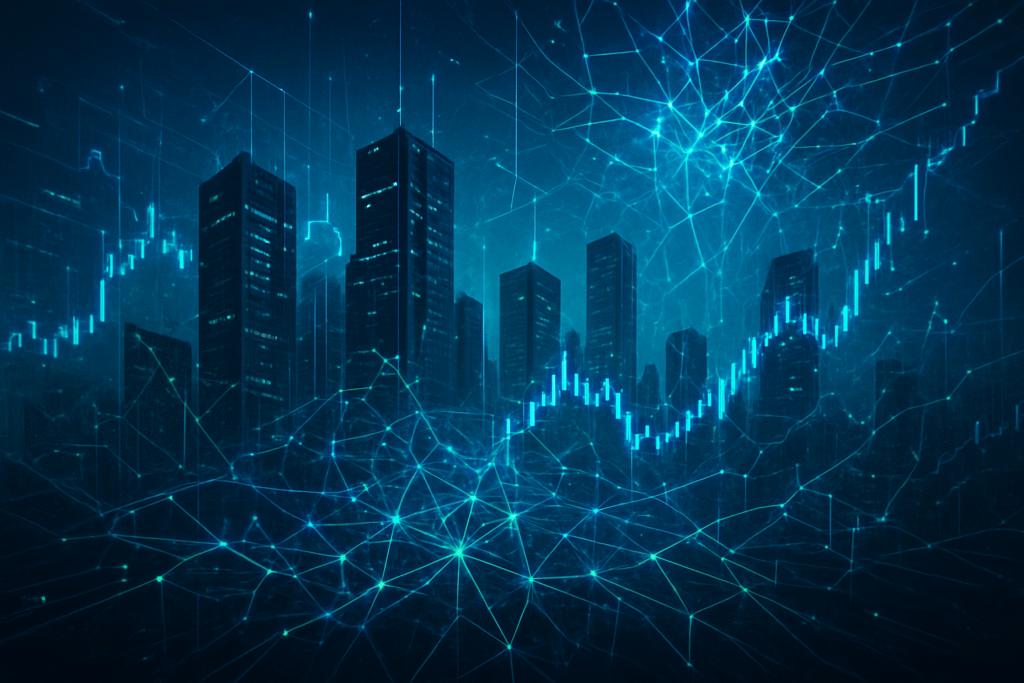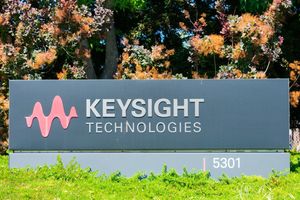
The technology sector, a titan of innovation and economic growth, has become an undeniable driver of overall stock market volatility. Its performance, characterized by rapid advancements, high growth potential, and significant market capitalization, creates a dynamic intersection with the broader financial markets. Recent trends, particularly the artificial intelligence (AI) boom, coupled with evolving interest rates and regulatory pressures, have amplified both the sector's highs and its dramatic corrections, profoundly influencing investor confidence.
The sheer scale and market dominance of a handful of "Big Tech" companies, often referred to as the "Magnificent Seven" (including giants like Apple (NASDAQ: AAPL), Microsoft (NASDAQ: MSFT), Amazon (NASDAQ: AMZN), Alphabet (NASDAQ: GOOGL), Meta (NASDAQ: META), Nvidia (NASDAQ: NVDA), and Tesla (NASDAQ: TSLA)), mean their individual performance can disproportionately sway major stock indices like the S&P 500 and Nasdaq. Tech stocks are frequently valued on the promise of future growth and innovation, making them highly sensitive to shifts in economic outlook and investor sentiment. This "growth at all costs" mentality, prevalent in earlier low-interest-rate environments, has faced a recalibration, with investors increasingly favoring companies that demonstrate sustainable cash flows and margins.
The Algorithmic Engine: AI's Technical Contributions to Market Volatility
Artificial intelligence is profoundly transforming financial markets, introducing advanced capabilities that, while enhancing efficiency, also contribute to increased volatility. Specific AI advancements, such as new models, high-frequency trading (HFT) algorithms, and increased automation, technically drive these market fluctuations in ways that significantly differ from previous approaches. The AI research community and industry experts are actively discussing the multifaceted impact of these technologies on market stability.
New AI models contribute to volatility through their superior analytical capabilities and, at times, through their disruptive market impact. Deep learning models, including neural networks, Convolutional Neural Networks (CNNs), Long Short-Term Memory (LSTM) networks, and Transformer architectures, are adept at recognizing complex, non-linear patterns and trends in vast financial datasets. They can analyze both structured data (like price movements and trading volumes) and unstructured data (such as news articles, social media sentiment, and corporate reports) in real-time. However, their complexity and "black box" nature can make it difficult for risk managers to interpret how decisions are made, elevating model risk. A striking example of a new AI model contributing to market volatility is the Chinese startup Deepseek. In January 2025, Deepseek's announcement of a cost-efficient, open-source AI model capable of competing with established solutions like OpenAI's ChatGPT caused a significant stir in global financial markets. This led to a nearly $1 trillion decline in the market capitalization of the US tech sector in a single day, with major semiconductor stocks like Nvidia (NASDAQ: NVDA) plunging 17%. The volatility arose as investors re-evaluated the future dominance and valuation premiums of incumbent tech companies, fearing that inexpensive, high-performing AI could disrupt the need for massive AI infrastructure investments.
High-Frequency Trading (HFT), a subset of algorithmic trading, employs sophisticated algorithms to execute a massive number of trades at ultra-fast speeds (microseconds to milliseconds), leveraging slight price discrepancies. HFT algorithms continually analyze real-time market data, identify fleeting opportunities, and execute orders with extreme speed. This rapid reaction can generate sharp price swings and exacerbate short-term volatility, especially during periods of rapid price movements or market stress. A critical concern is the potential for "herding behavior." When multiple HFT algorithms, possibly developed by different firms but based on similar models or reacting to the same market signals, converge on identical trading strategies, they can act in unison, amplifying market volatility and leading to dramatic and rapid price movements that can undermine market liquidity. HFT has been widely implicated in triggering or exacerbating "flash crashes"—events where market prices plummet and then recover within minutes, such as the 2010 Flash Crash.
The growing automation of financial processes, driven by AI, impacts volatility through faster decision-making and interconnectedness. AI's ability to process enormous volumes of data and instantly rebalance investment portfolios leads to significantly higher trading volumes. This automation means prices can react much more quickly to new information or market shifts than in manually traded markets, potentially compressing significant price changes into shorter timeframes. While designed to limit individual losses, the widespread deployment of automated stop-loss orders in AI-driven systems can collectively trigger cascades of selling during market downturns, contributing to sudden and significant market swings.
AI advancements fundamentally differ from previous quantitative and algorithmic trading approaches in several key aspects. Unlike traditional algorithms that operate on rigid, pre-defined rules, AI trading systems can adapt to evolving market conditions, learn from new data, and dynamically adjust their strategies in real-time without direct human intervention. AI models can process vast and diverse datasets—including unstructured text, news, and social media—to uncover complex, non-linear patterns and subtle correlations beyond the scope of traditional statistical methods or human analysis. While algorithmic trading automates execution, AI automates the decision-making process itself, evaluating live market data, recognizing trends, and formulating strategies with significantly less human input. However, this complexity often leads to "black box" issues, where the internal workings and decision rationale of an AI model are difficult to understand, posing challenges for validation and oversight.
Initial reactions from the AI research community and industry experts are varied, encompassing both excitement about AI's potential and significant caution regarding its risks. Concerns over increased volatility and systemic risk are prevalent. Michael Barr, the Federal Reserve's Vice Chair for Supervision, warned that generative AI could foster market instability and facilitate coordinated market manipulation due to potential "herding behavior" and risk concentration. The International Monetary Fund (IMF) has also echoed concerns about "cascading" effects and sudden liquidity evaporation during stressful periods driven by AI-enhanced algorithmic trading. Experts emphasize the need for regulators to adapt their tools and frameworks, including designing new volatility response mechanisms like circuit breakers, while also recognizing AI's significant benefits for risk management, liquidity, and efficiency.
Corporate Crossroads: How Volatility Shapes AI and Tech Giants
The increasing role of technology in financial markets, particularly through AI-driven trading and rapid innovation cycles, has amplified market volatility, creating a complex landscape for AI companies, tech giants, and startups. This tech-driven volatility is characterized by swift valuation changes, intense competition, and the potential for significant disruption.
Pure-play AI companies, especially those with high cash burn rates and undifferentiated offerings, are highly vulnerable in a volatile market. The market is increasingly scrutinizing the disconnect between "hype" and "reality" in AI, demanding demonstrable returns on investment rather than speculative future growth. Valuation concerns can significantly impede their ability to secure the substantial funding required for research and development and talent acquisition. Companies merely "AI-washing" or relying on third-party APIs without developing genuine AI capabilities are likely to struggle. Similarly, market volatility generally leads to reduced startup valuations. Many AI startups, despite securing billion-dollar valuations, have minimal operational infrastructure or revenue, drawing parallels to the speculative excesses of the dot-com era.
The "Magnificent Seven" (Apple (NASDAQ: AAPL), Microsoft (NASDAQ: MSFT), Amazon (NASDAQ: AMZN), Alphabet (NASDAQ: GOOGL), Meta (NASDAQ: META), Nvidia (NASDAQ: NVDA), and Tesla (NASDAQ: TSLA)) have experienced significant price drops and increased volatility. Factors contributing to this include fears of trade tensions, potential recessions, interest rate uncertainty, and market rotations from high-growth tech to perceived value sectors. While some, like Nvidia (NASDAQ: NVDA), have surged due to their dominance in AI infrastructure and chips, others like Apple (NASDAQ: AAPL) and Tesla (NASDAQ: TSLA) have faced declines. This divergence in performance highlights concentration risks, where the faltering of one or more of these dominant companies could significantly impact broader market indices like the S&P 500.
In this volatile environment, certain companies are better positioned to thrive. Established firms possessing strong balance sheets, diversified revenue streams, and essential product or service offerings are more resilient. Companies building the foundational technology for AI, such as semiconductor manufacturers (e.g., Nvidia (NASDAQ: NVDA), Broadcom (NASDAQ: AVGO)), data infrastructure providers, and cloud computing platforms (e.g., Microsoft's Azure, Amazon's AWS, Alphabet's Google Cloud), are direct beneficiaries of the "AI arms race." They are essential for the massive investments tech giants are making in data centers and AI development. Furthermore, companies that effectively integrate and leverage AI to improve efficiency, cut costs, and open new revenue streams across various industries are expected to benefit over the long term.
The competitive landscape is intensifying due to tech-driven market volatility. Major AI labs like OpenAI, Anthropic, Google DeepMind, and Meta AI face significant pressure to demonstrate sustainable profitability. The emergence of new players offering advanced AI tools at a fraction of the traditional cost, such as Deepseek, is disrupting established firms. This forces major tech companies to reassess their capital expenditure strategies and justify large investments in an environment where cheaper alternatives exist. Tech giants are locked in an "AI arms race," collectively investing hundreds of billions annually into AI infrastructure and development, necessitating continuous innovation across cloud computing, digital advertising, and other sectors. Even dominant tech companies face the risk of disruption from upstarts or unforeseen economic changes, reminding investors that "competitive moats" can be breached.
AI-driven market volatility carries significant disruptive potential. AI is rapidly changing online information access and corporate operations, threatening to make certain businesses obsolete, particularly service-based businesses with high headcounts. Companies in sectors like graphic design and stock media (e.g., Adobe (NASDAQ: ADBE), Shutterstock (NYSE: SSTK), Wix.com (NASDAQ: WIX)) are facing headwinds due to competition from generative AI, which can automate and scale content creation more efficiently. AI also has the potential to disrupt labor markets significantly, particularly threatening white-collar jobs in sectors such as finance, law, and customer service through automation.
To navigate and capitalize on tech-driven market volatility, companies are adopting several strategic approaches. AI is moving from an experimental phase to being a core component of enterprise strategy, with many companies structurally adopting generative AI. Tech giants are strategically investing unprecedented amounts in AI infrastructure, such as data centers. For example, Microsoft (NASDAQ: MSFT), Google (NASDAQ: GOOGL), and Meta (NASDAQ: META) have committed tens to hundreds of billions to build out their AI capabilities, securing long-term strategic advantages. Strategic partnerships between AI platforms, chip providers, and data center providers are becoming crucial for scaling faster and leveraging specialized expertise. In a market scrutinizing "hype" versus "reality," companies that can demonstrate genuine revenue generation and sustainable business models from their AI investments are better positioned to weather downturns and attract capital.
A New Era of Financial Dynamics: Wider Significance of Tech-Driven Volatility
The integration of technology, particularly Artificial Intelligence (AI) and related computational technologies, presents a complex interplay of benefits and significant risks that extend to the broader economy and society. This phenomenon profoundly reshapes financial markets, fundamentally altering their dynamics and leading to increased volatility.
Technology, particularly algorithmic and high-frequency trading (HFT), is a primary driver of increased financial market volatility. HFT utilizes advanced computer algorithms to analyze market data, identify trading opportunities, and execute trades at speeds far exceeding human capability. This speed can increase short-term intraday volatility, making markets riskier for traditional investors. While HFT can enhance market efficiency by improving liquidity and narrowing bid-ask spreads under normal conditions, its benefits tend to diminish during periods of market stress, amplifying price swings. Events like the 2010 "Flash Crash" are stark examples where algorithmic trading strategies contributed to sudden and severe market dislocations. Beyond direct trading mechanisms, social media also plays a role in market volatility, as sentiment extracted from platforms like X (formerly Twitter) and Reddit can predict stock market fluctuations and be integrated into algorithmic trading strategies.
The role of technology in financial market volatility is deeply embedded within the broader AI landscape and its evolving trends. Advanced AI and machine learning (ML) models are increasingly employed for sophisticated tasks such as price prediction, pattern recognition, risk assessment, portfolio optimization, fraud detection, and personalized financial services. These systems can process vast amounts of diverse information sources, including news articles, social media, and economic indicators, to identify patterns and trends that inform investment strategies more effectively than traditional models. Current AI trends, such as deep learning and and reinforcement learning, allow algorithms to continuously refine their predictions and adapt to changing market conditions. However, these sophisticated AI systems introduce new dynamics, as they may converge on similar trading strategies when exposed to the same price signals. This "monoculture" effect, where many market participants rely on similar AI-driven decision-making frameworks, can diminish market diversity and amplify systemic risks, leading to correlated trades and increased volatility during stress scenarios.
The wider significance of tech-driven market volatility encompasses substantial economic and societal impacts. While technology can enhance market efficiency by allowing faster processing of information and more accurate price discovery, the lightning speed of AI-driven trading can also lead to price movements not rooted in genuine supply and demand, potentially distorting price signals. Firms with superior AI resources and advanced technological infrastructure may gain disproportionate advantages, potentially exacerbating wealth inequality. Frequent flash crashes and rapid, seemingly irrational market movements can erode investor confidence and deter participation, particularly from retail investors. While AI can improve risk management and enhance financial stability by providing early warnings, its potential to amplify volatility and trigger systemic events poses a threat to overall economic stability.
The rapid evolution of AI in financial markets introduces several critical concerns. Existing regulatory frameworks often struggle to keep pace with AI's speed and complexity. There's a pressing need for new regulations addressing algorithmic trading, AI oversight, and market manipulation. Regulators are concerned about "monoculture" effects and detecting manipulative AI strategies, such as "spoofing" or "front-running," which is a significant challenge due to the opacity of these systems. AI in finance also raises ethical questions regarding fairness and bias. If AI models are trained on historical data reflecting societal inequalities, they can perpetuate or amplify existing biases. The "black box" nature of AI algorithms makes it difficult to understand their decision-making processes, complicating accountability. The interconnectedness of algorithms and the potential for cascading failures pose a significant systemic risk, especially when multiple AI systems converge on similar strategies during stress scenarios.
The current impact of AI on financial market volatility is distinct from previous technological milestones, even while building on earlier trends. The shift from floor trading to electronic trading in the late 20th century significantly increased market accessibility and efficiency. Early algorithmic trading and quantitative strategies improved market speed but also contributed to "flash crash" events. What distinguishes the current AI era is the unprecedented speed and capacity to process vast, complex, and unstructured datasets almost instantly. Unlike earlier expert systems that relied on predefined rules, modern AI models can learn complex patterns, adapt to dynamic conditions, and even generate insights. This capability takes the impact on market speed and potential for volatility to "another level." For example, AI can interpret complex Federal Reserve meeting minutes faster than any human, potentially generating immediate trading signals.
The Horizon Ahead: Future Developments in AI and Financial Markets
The intersection of Artificial Intelligence (AI) and financial technology (FinTech) is rapidly reshaping global financial markets, promising enhanced efficiency and innovation while simultaneously introducing new forms of volatility and systemic risks. Experts anticipate significant near-term and long-term developments, new applications, and a range of challenges that necessitate careful consideration.
In the near term (within 3-5 years), the financial sector is projected to significantly increase its spending on AI, from USD 35 billion in 2023 to USD 97 billion in 2027. High-frequency, AI-driven trading is expected to become more prevalent, especially in liquid asset classes like equities, government bonds, and listed derivatives. Financial institutions foresee greater integration of sophisticated AI into investment and trading decisions, though a "human in the loop" approach is expected to persist for large capital allocation decisions. Generative AI (GenAI) is also being gradually deployed, initially focusing on internal operational efficiency and employee productivity rather than high-risk, customer-facing services.
Over the longer term, the widespread adoption of AI strategies could lead to deeper and more liquid markets. However, AI also has the potential to make markets more opaque, harder to monitor, and more vulnerable to cyber-attacks and manipulation. AI uptake could drive fundamental changes in market structure, macroeconomic conditions, and even energy use, with significant implications for financial institutions. A key long-term development is the potential for AI to predict financial crises by examining vast datasets and identifying pre-crisis patterns, enabling pre-emptive actions to mitigate or avert them. While AI can enhance market efficiency, it also poses significant risks to financial stability, particularly through "herding" behavior, where many firms relying on similar AI models may act in unison, leading to rapid and extreme market drops. Experts like Goldman Sachs (NYSE: GS) CEO David Solomon have warned of a potential 10-20% market correction within the next year, partly attributed to elevated AI market valuations. Saxo Bank's Ole Hansen also predicts that a revaluation of the AI sector could trigger a volatility shock.
AI and FinTech are poised to introduce a wide array of new applications and enhance existing financial services. Beyond high-frequency trading, AI will further optimize portfolios, balancing risk and return across diverse asset classes. Sentiment analysis of news, social media, and financial reports will be used to gauge market sentiment and predict price volatility. AI will provide more precise, real-time insights into market, credit, and operational risks, evolving from fraud detection to prediction. Robotic Process Automation (RPA) will automate repetitive back-office tasks, while Generative AI tools and advanced chatbots will streamline and personalize customer service. AI will also automate continuous monitoring, documentation, and reporting to help financial institutions meet complex compliance obligations.
The rapid advancement and adoption of AI in financial markets present several critical challenges across regulatory, ethical, and technological domains. The regulatory landscape for AI in finance is still nascent and rapidly evolving, struggling to keep pace with technological advancements. Determining accountability when AI systems fail is a major legal challenge due to their "black box" nature. The global nature of AI applications creates complexities with fragmented regulatory approaches, highlighting the need for strong international coordination. Ethical challenges include algorithmic bias and fairness, as AI systems trained on historical data can perpetuate and amplify existing biases. The "black box" nature also erodes trust and complicates compliance with regulations that require clear explanations for AI-driven decisions. Technologically, AI systems require vast datasets, raising concerns about data privacy and security, and the effectiveness of AI models depends heavily on data quality.
Experts predict that AI will become a critical differentiator for financial institutions, enabling them to manage complexity, mitigate risk, and seize market opportunities. The Bank of England, the IMF, and other financial institutions are increasingly issuing warnings about AI's potential to amplify market volatility, especially if a narrow set of AI companies dominate and their valuations become disconnected from fundamentals. There is a consensus that a "human in the loop" approach will remain crucial, particularly for significant capital allocation decisions, even as AI integration deepens. Regulators are expected to intensify their scrutiny of the sector, focusing on ensuring consumer protection, financial stability, and developing robust governance frameworks.
The AI-Driven Market: A Comprehensive Wrap-Up
The integration of technology, particularly Artificial Intelligence, into financial markets has profoundly reshaped their landscape, introducing both unprecedented efficiencies and new avenues for volatility. From accelerating information flows and trade execution to revolutionizing risk management and investment strategies, AI stands as a pivotal development in financial history. However, its rapid adoption also presents significant challenges to market stability, demanding close scrutiny and evolving regulatory responses.
Key takeaways regarding AI's impact on market stability include its positive contributions to enhanced efficiency, faster price discovery, improved risk management, and operational benefits through automation. AI significantly improves price discovery and deepens market liquidity by processing vast amounts of structured and unstructured data at speeds unachievable by humans. However, these benefits are counterbalanced by significant risks. AI-driven markets can amplify the speed and size of price movements, leading to "herding behavior" and procyclicality, where widespread adoption of similar AI models can exacerbate liquidity crunches and rapid, momentum-driven swings. The "black box" problem, where the complexity and limited explainability of AI models make it difficult to understand their decisions, increases model risk and complicates oversight. Furthermore, concentration risks due to reliance on a few specialized hardware and cloud service providers, along with increased cyber risks, pose systemic threats.
AI's journey in finance began in the late 20th century with algorithmic trading and statistical arbitrage. The current era, particularly with the rapid advancements in Generative AI and large language models, represents a significant leap. These technologies allow for the processing of vast amounts of unstructured, text-based data, enhancing existing analytical tools and automating a wider range of financial tasks. This shift signifies a move from mere automation to systems capable of learning, adapting, and acting with increasing autonomy, profoundly transforming trading, risk management, and market analysis. This period is recognized as a "revolutionary force" that continues to redefine financial services.
The long-term impact of AI on financial markets is expected to be transformative and far-reaching. AI will continue to drive new levels of precision, efficiency, and innovation. While it promises deeper and potentially more liquid markets, the risk of amplified volatility, especially during stress events, remains a significant concern due to the potential for widespread algorithmic selling and herding behavior. AI uptake is also expected to alter market structures, potentially increasing the dominance of non-bank financial intermediaries that are agile and less burdened by traditional regulations. This, coupled with the concentration of AI technology providers, could lead to new forms of systemic risk and challenges for market transparency. Furthermore, AI introduces broader societal challenges such as job displacement, widening skill gaps, and biases in decision-making. The increasing talk of an "AI bubble" within certain high-growth tech stocks raises concerns about inflated valuations detached from underlying earnings, reminiscent of past tech booms, which could lead to significant market corrections. Regulatory frameworks will need to continually evolve to address these emerging complexities.
In the coming weeks and months, several critical areas warrant close attention. Monitor for signs of fatigue or potential corrections in the AI sector, particularly among large tech companies, as recent market dips indicate growing investor apprehension about rapid price increases outpacing fundamental earnings. Keep an eye on global financial authorities as they work to address information gaps for monitoring AI usage, assess the adequacy of current policy frameworks, and enhance supervisory and regulatory capabilities. Observe the continued growth and influence of non-bank entities in AI-driven trading, and the concentration of critical AI technology and cloud service providers. Assess whether AI innovations are translating into sustainable productivity gains and revenue growth for companies, rather than merely speculative hype. Finally, the broader economic environment remains a crucial watch point, as a significant economic slowdown or recession could magnify any AI-related market declines.
This content is intended for informational purposes only and represents analysis of current AI developments.
TokenRing AI delivers enterprise-grade solutions for multi-agent AI workflow orchestration, AI-powered development tools, and seamless remote collaboration platforms.
For more information, visit https://www.tokenring.ai/.







